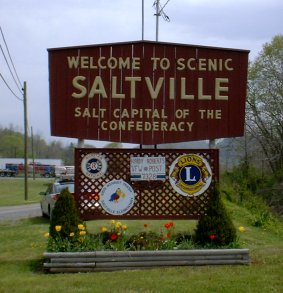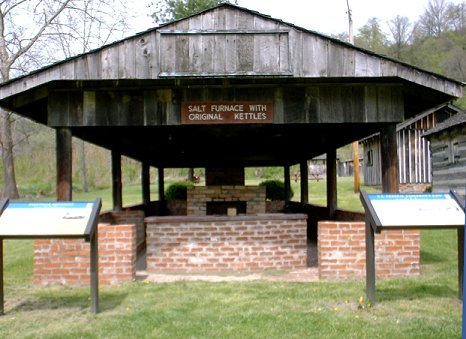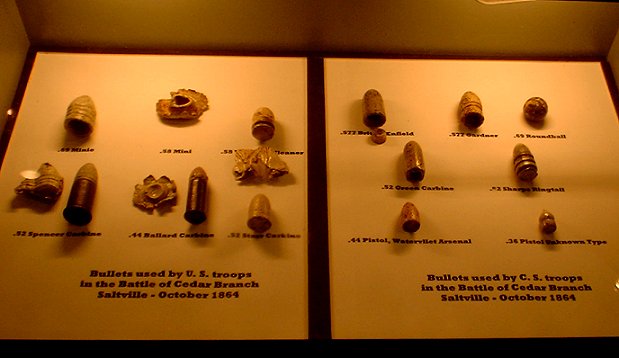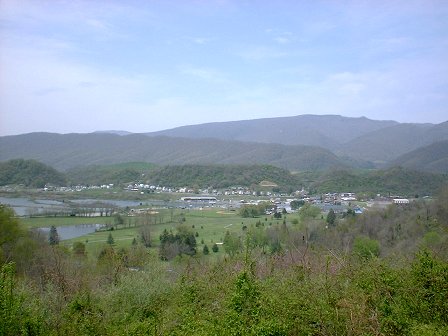

Nestled in a valley in southwest Virginia, the small town of Saltville proved to be vitally important to the Confederate States of America. Saltville is named for its salt ponds, which date back to the ice age. Because of territorial loss and the effectiveness of the Union’s naval blockade, the Saltville Valley was the Confederacy’s only significant source of salt. There was another saltworks in Louisiana, but its long supply line was much too easily cut by Union raids.


Smoking and salting meat was the only method of preservation at the time. A reliable source of salt was crucial to ensure that Confederate troops would not starve. Production at the saltworks in Saltville was increased from its prewar rate of about 300,000 bushels per year to 4,000,000 bushes per year by 1864.

The Union realized the importance of this highly productive saltworks and sent 5,200 men under the command of General Stephen G. Burbridge from eastern Kentucky to Saltville. These troops were well equipped with modern weaponry and outnumbered the defending Confederate troops two-to-one. Despite these advantages, their approach was halted on October 2, 1864, at Cedar Branch, a few short miles east of the saltworks.
Though the Confederate troops were using outdated muzzleloaders and muskets and most were wearing civilian clothing, they had excellent defensive positions. They also had the incentive of protecting their home ground.

Many of the soldiers of both armies were from Kentucky; this battle was literally “neighbor against neighbor”, as both the U.S. 39th Kentucky Volunteer, Mounted Infantry Regiment and the C.S. 10th Kentucky Cavalry Regiment drew their recruits from the exact same neighborhoods in Kentucky, Virginia, and West Virginia.

After a long day of struggle with many casualties and no positive results, General Burbridge withdrew back into Kentucky, leaving his dead and wounded on the battlefield. Among the captured and wounded troops were soldiers in the 5th U.S. Colored Cavalry. Many of these men (reportedly over one hundred) were murdered, some while in the hospital at nearby Emory & Henry College. These murders have been called “possibly the worst atrocity of the Civil War” and are now referred to as the “Saltville Massacre”. Captain Champ Ferguson, head of a body of irregulars, was later captured and hanged in front of U.S. Colored Troops for these murders.
On December 20, 1864, Saltville again came under attack. U.S. General George Stoneman’s raid proved much more successful than the October campaign. There were only a few hundred soldiers defending the saltworks by this time, mostly old men and boys. Following a daring Union assault after nightfall, the defensive troops quickly fled to the mountains or surrendered.
Salt kettles were broken, furnaces were destroyed, two locomotives were dismantled, and sheds were burned. Union troops “choked” the wells by dropping cannonballs and railroad steel into them. They reported that the saltworks had been so completely destroyed that no salt could be made until new wells were dug and new kettles acquired.

Soon after the U.S. troops left Saltville on December 22, Mr. William A. Stuart (a town citizen) made a survey and found that the wells could be opened. It was also discovered that the Union troops had overlooked nearly half of the salt kettles in their haste.
Within a few short weeks, the furnaces had been rebuilt and Saltville was once again furnishing salt to the Confederacy. In fact, the manufacture of salt was continued until 1904 when the salt plant was shut down permanently.

 |
 |